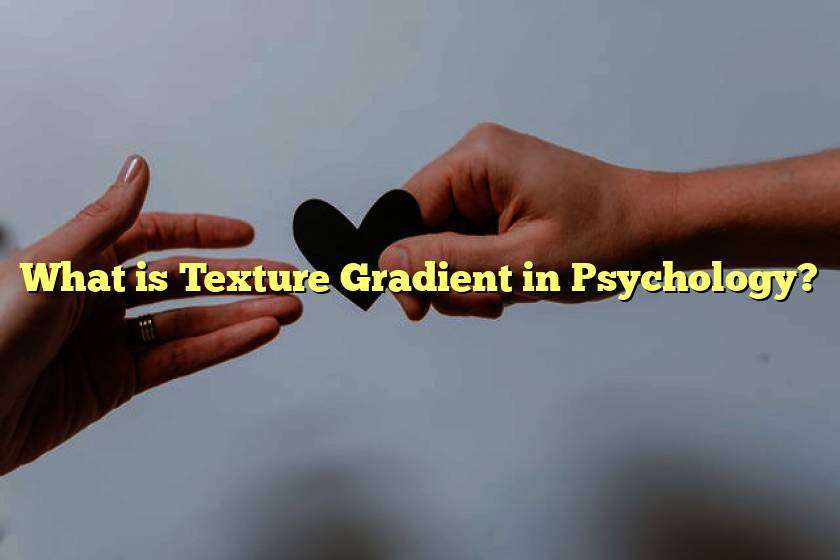When it comes to the field of psychology, there are a plethora of concepts and theories to explore. Texture gradient is one such concept that is often discussed, but what exactly is it?
Understanding Texture Gradient
In simple terms, texture gradient refers to the visual phenomenon in which textures appear to change as they recede into the distance. This concept is highly applicable in the study of perception, as it highlights how our brains interpret visual stimuli in different ways.
Texture gradient is often seen in natural landscapes, such as a mountain range or a forest. As we look at these scenes, the texture of the objects within them seems to change depending on their distance from us. The closer objects appear more detailed, while those further in the distance appear blurrier and less defined.
The Role of Perception in Texture Gradient
So, why does texture gradient happen in the first place? This can be explained by the role of perception in our brains when we view a visual scene.
Perception refers to how we interpret information using our senses, and for texture gradient, this involves interpreting the way textures appear to change in relation to distance. As we look at objects that are further away from us, our brains receive fewer visual details, which makes these objects appear blurrier and less defined.
This perceptual shift in how we interpret textures can be seen in various areas of research, including studies on the perception of depth and distance.
Applications of Texture Gradient in Psychology
Texture gradient has implications in many areas of psychology, including perception, cognition, and visual processing. One area in which it has been explored extensively is in relation to the concept of attention.
Research has shown that texture gradient can impact our attentional processes, with objects that appear more detailed and closer in our visual field capturing our attention more effectively than those that appear blurry or further away.
This concept of attentional capture has many practical applications in areas such as advertising and design, where marketers and designers use visual elements to draw attention to specific details in their messages.
Conclusion
In conclusion, texture gradient is a visual phenomenon that plays an important role in our perception of objects and scenes. By understanding this concept, we can better understand the role of perception in our understanding of the world around us and how to design and present visual information in effective ways.
From the role of perception in texture gradient to its applications in psychology, this concept has much to offer those looking to understand the complexities of the human mind. As research continues to delve deeper into this area, we can expect to gain even greater insights into how texture gradient impacts our thoughts and behaviors.



